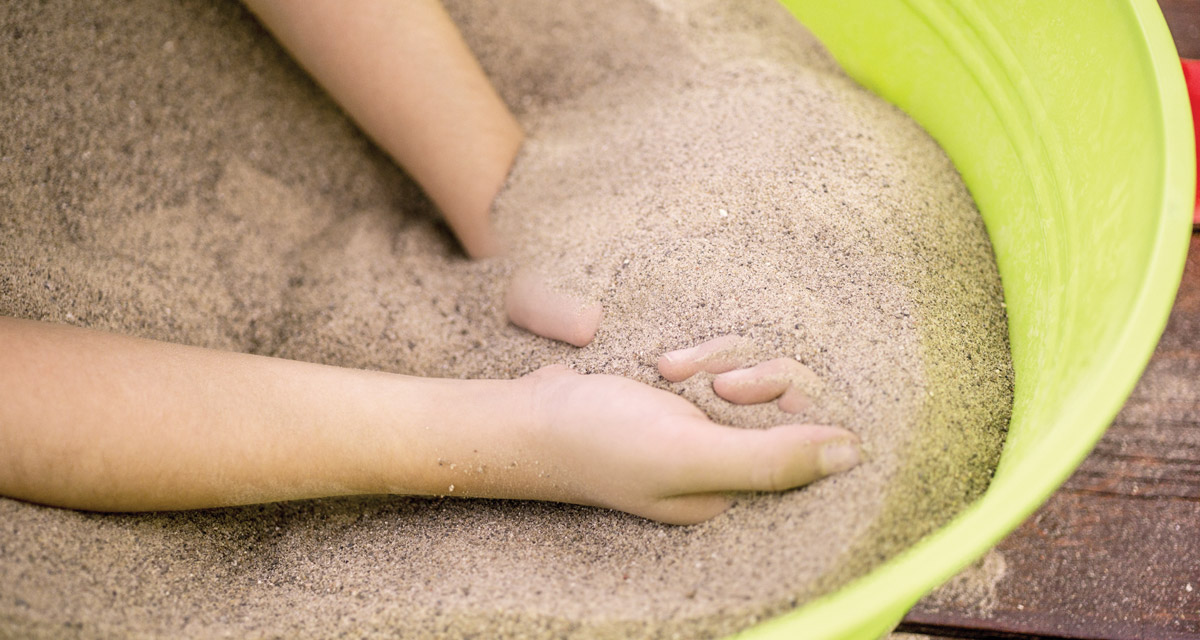At a young age, most people learn about the five senses: smell, taste, touch, hearing, and sight. While these feelings allow children to become aware of their surroundings and the world around them, they can also be incorporated into a child’s play to help his or her growth and development. Sensory play, as it is commonly known, has many benefits and can be included in multiple activities for all ages.
What is Sensory Play?
According to educationalplaycare.com, sensory play is defined as “an activity that stimulates a young child’s senses, facilitates exploration, and encourages them to use scientific processes while they play, create, investigate, and explore.” To summarize, sensory play is basically helping a child explore while using their five senses to help with their brain development. Along with smell, taste, touch, hearing, and sight, activities try to involve body awareness and balance. These two extra “senses” allow a child’s brain to respond faster to muscles and pressure points in various parts of the body, helping the child learn where their body is in relation to space and gravity. Together, the seven elements assist in building stronger connections with the brain when it comes to processing and responding to sensory information. For example, sensory play helps children create a quicker response time to move away from something hot, instead of being drawn in by the object’s warmth. Another example regards picky eaters, who might steer away from foods with wet textures, such as spaghetti. To overcome this, sensory play activities help the child touch, smell, and play to get familiar with this texture.
This developmental concept lets children adapt to the elements in their environment by giving them exposure to multiple senses and atmospheres. It guides them in constructing safe and positive decisions and making sense of their world, while comforting themselves no matter what environment they are in.
Benefits:
There are numerous benefits to using sensory play.
- It helps with both a child’s fine and gross motor skills. Various activities in sensory play utilize small and large muscles to complete things, such as running, pouring, and pinching.
- It gives children the opportunity to develop a broader picture of the world. By exploring different objects that involve all their senses, kids will be able to describe their surroundings in more descriptive ways. Instead of saying a tree is green with leaves, they could explain the tree is a pine with rough bark. Also, they can build their vocabulary by learning new words and adjectives.
- As mentioned above, sensory play heightens a child’s brain connections. The activities build nerve connections between the various pathways in the brain, which gives a person the ability to complete more complex learning tasks.
- In addition to motor skills and language development, the exercises reinforce cognitive growth, problem-solving skills, and social interaction. Lastly, memory recognition is developed and enhanced. We all know that when we are adults, a particular smell or taste can bring us back to a favorite childhood memory.
Activity Examples:
There is no “rule book” for what type of activities classify as sensory play. However, the needed “requirements” for this type of play are that at least one of the five senses is incorporated and allows the child to explore, investigate, and examine their surroundings. These surroundings could be the objects they are playing with, the noises around them, etc. A few examples of sensory play activities are sensory tubs, sound walls, and cooking.
Sensory tubs are quick and simple ways for children to experience various textures. All you do is take a closed box or tub (with a hole for the child to reach their hand in) and fill with dry pasta, cornmeal, play dough, etc. These items can be in one tub or separate tubs. Then, have your child feel, touch, and get to know the materials.
Sound walls should include objects with different sounds at various volume levels. In fact, you don’t even need to put the items on a wall, but a child needs to be able to hear and see what objects are making what sounds.
Lastly, cooking is a great sensory play exercise! With this activity, it is important to factor a child’s age into what they are doing, but cooking gives them the opportunity to use all of their senses.
These are just three of the many activities for sensory play. But whether we realize it or not, children experience sensory play almost every day through their fun adventures!























